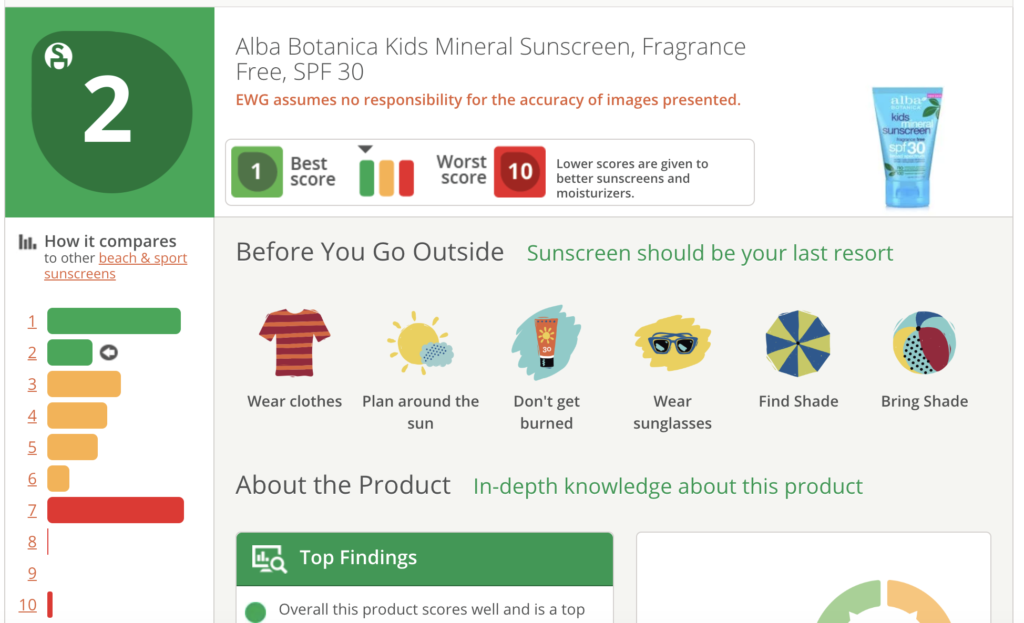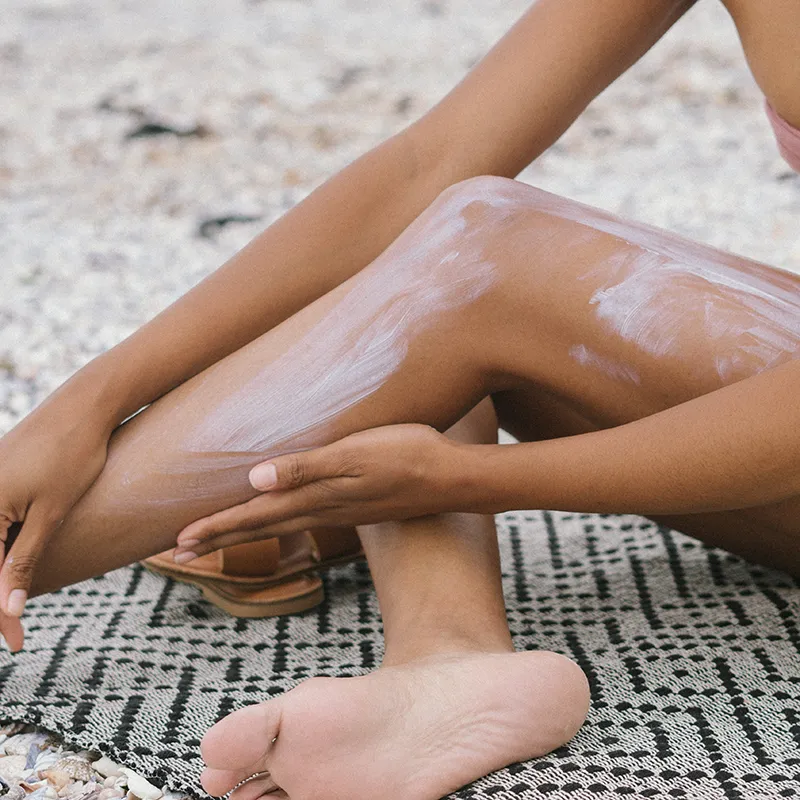Sunscreen is supposed to protect our skin, but not all of them truly prevent damage from UV rays–some sunscreens even have ingredients that can cause other issues, like hormone and fertility problems over time.
Do you know what ingredients are in your sunscreen? Make sure that you’re using a sunscreen that actually protects you from ultraviolet rays, keeps you healthy, and helps preserve our oceans. Every year since 2007, the EWG releases a sunscreen guide based on their evaluation of about 650 beach and sport sunscreens. This year, they found that 2/3 of the sunscreens evaluated still contained troublesome ingredients and offered inferior sun protection.
We’ve summarized their main findings for you here.
What you may not know about sunscreen
There is little scientific evidence that suggests that sunscreen alone reduces the risk of cancer, particularly melanoma, the deadliest type of skin cancer. Melanoma rates have tripled in the past three decades. It’s important that you fully understand what exactly sunscreen does, and how to keep yourself safe from ultraviolet rays otherwise.
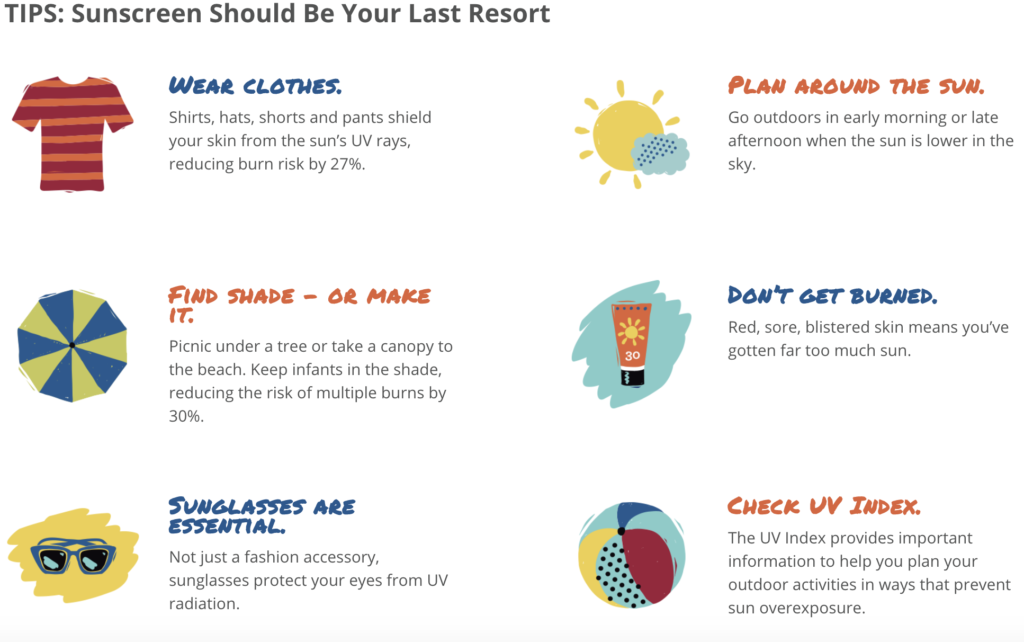
Higher SPF doesn’t always mean better
Higher SPF, or sunburn protection factor, doesn’t necessarily mean greater protection from UV-related skin damage, especially UVA. In 2011, the FDA determined that SPF claims were “inherently misleading” and proposed to join other industrialized nations in capping the SPF values at 50. The agency never finalized this rule, and you can still see many sunscreens marketed at high SPF values.
You Can Still Damage Your Skin When Wearing Sunscreen
Most sunscreens don’t sufficiently protect your skin from the sun’s ultraviolet (UV) rays. UVB rays are the primary cause of sunburns and pre-cancerous DNA mutations, and UVA rays cause tanning and subtler damage. UVB rays are high-energy but only makes up 3-5% of the radiation hitting the earth.
UVA rays have less energy but penetrate deeper into skin tissue and are most responsible for generating free radicals that damage DNA and skin cells. This can contribute to skin cancer, accelerate skin aging, suppress the immune system and can contribute to the development of melanoma.
SPF prevents sunburn and can block UVB rays, but does not necessarily prevent or reduce the damage caused by UVA rays.
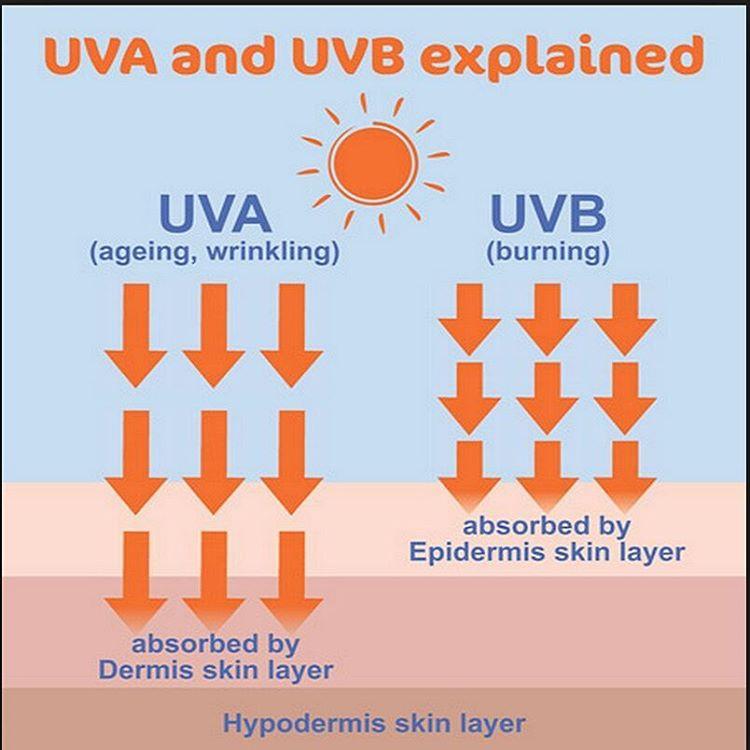

Sunscreens in Europe have higher UVA protection than sunscreens produced in the US, due to the FDA’s limitation on ingredients. Only two of the FDA approved ingredients filter UVA rays, while Europe has seven ingredients that can do so.
Here are some study results gathered by the EWG:
“Stanford University dermatologists who reviewed CDC national survey data concluded that people who relied solely on sunscreens for sun protection had more sunburns than people who reported infrequent sunscreen use but wore hats and clothing to shield themselves from the sun (Linos 2011).
In Sweden, increased use of sunscreen by children was linked to more sunburns (Rodvall 2010). Several other studies of real-world sunscreen use found that people who use sunscreen for skin protection during periods of intense UV exposure had more sunburns (Koster 2010, Autier 2007).”
Staying in the shade and covering skin with clothing is suggested as an effective way to protect from skin damage. Although sunscreen-use can mitigate damage, it does not thoroughly protect your skin, especially during long periods under the sun.
Spray sunscreens are not as effective
The EWG and FDA have raised concerns with spray-on sunscreen because it poses an inhalation risk and does not coat evenly on the skin to protect it. However, the FDA has not taken action to ban sprays yet.
Sunscreen Blocks Your Ability To Absorb Vitamin D
Vitamin D is critical for your health– it helps to reduce your risk of disease, and also is essential for absorption of calcium and bone growth. Vitamin D deficiency has been linked to breast cancer, colon cancer, prostate cancer, heart disease, depression, weight gain, and more. Unfortunately, about “8 percent of the population has a serious vitamin D deficiency, and another 25 percent is considered at risk of a deficiency (CDC 2011).” Vitamin D from the sun comes from UVB rays, which most sunscreens block out.
You can only absorb Vitamin D when you are not wearing sunscreen, and only at certain times of the day depending on your location. You can use the app Dminder to see when you can absorb Vitamin D, and a safe amount of time that you can stay in the sun while minimizing skin damage. It is likely that you still have low Vitamin D levels even if you do get sun and eat foods with Vitamin D. You may want to have your Vitamin D levels checked through a blood test. You can check with Dr. Johnson if you may need to start Vitamin D supplements.
Ingredients to Avoid:
These ingredients are still common in many sunscreens, and are legally allowed in the US despite potential health risks.
Oxybenzone
This ingredient is used in most sunscreens and is an allergen and hormone disruptor. Here are just a few of the issues and health risks associated with oxybenzone, as compiled by the EWG:
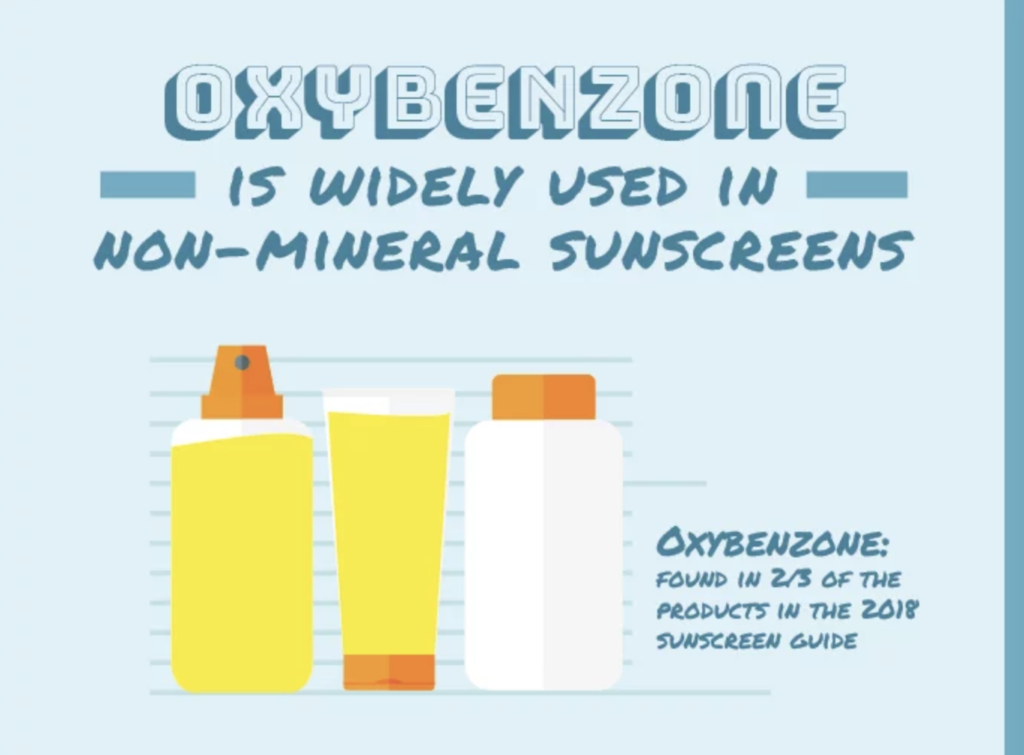
EXPOSURE & ABSORPTION
The Centers for Disease Control and Prevention have found oxybenzone routinely in more than 96 percent of the American population. Study participants who reported using sunscreen had higher oxybenzone exposures (Zamoiski 2015).
Margaret Schlumpf of the University of Zurich detected oxybenzone and four other sunscreen filters in Swiss women’s breast milk, indicating that the developing fetus and newborns may be exposed to these substances (Schlumpf 2008, Schlumpf 2010). She detected at least one sunscreen chemical in 85 percent of milk samples.“
HORMONE & FERTILITY DISRUPTION
“The National Institutes of Health and The State University of New York, Albany, suggest a link between higher concentrations of benzophenones and poorer reproductive success in men seeking assistance at a fertility clinic. Men with greater exposures to benzophenone-2 and/or 4-hydroxyoxybenzone had poorer sperm quality (Louis 2015), and reported that it took longer for their partners to conceive (Buck-Louis 2014). Female exposures to oxybenzone and related chemicals have been linked to increased risk of endometriosis (Kunisue 2012).”
ENVIRONMENTAL TOXIN
Oxybenzone is also damaging to coral reefs– it is toxic to coral and creates viral infections that can bleach coral and even result in coral death. It is estimated that up to 14,000 tons of sunscreen is deposited in the world’s oceans each year. To protect its coral and marine life, Hawaii recently passed a bill to ban the sale of oxybenzone-containing sunscreen.
RETINYL PALMITATE (form of vitamin A)
Other names: retinyl acetate, retinyl linoleate and retinol.
EWG found that this form of Vitamin A can harm skin. Government test data indicate that it may trigger development of skin tumors and lesions when used on skin in the presence of sunlight. Other governments warn that certain cosmetics may contribute to unsafe amounts of vitamin A, and recommend against using them.
METHYLISOTHIAZOLINONE
Methylisothiazolinone is a preservative and inactive ingredient in sunscreens. Inactive ingredients usually make up 50-70% of a sunscreen product. Methylisothiazolinone is known as a skin sensitizer, and in 2013, the American Contact Dermatitis Society named methylisothiazolinone its “allergen of the year”.
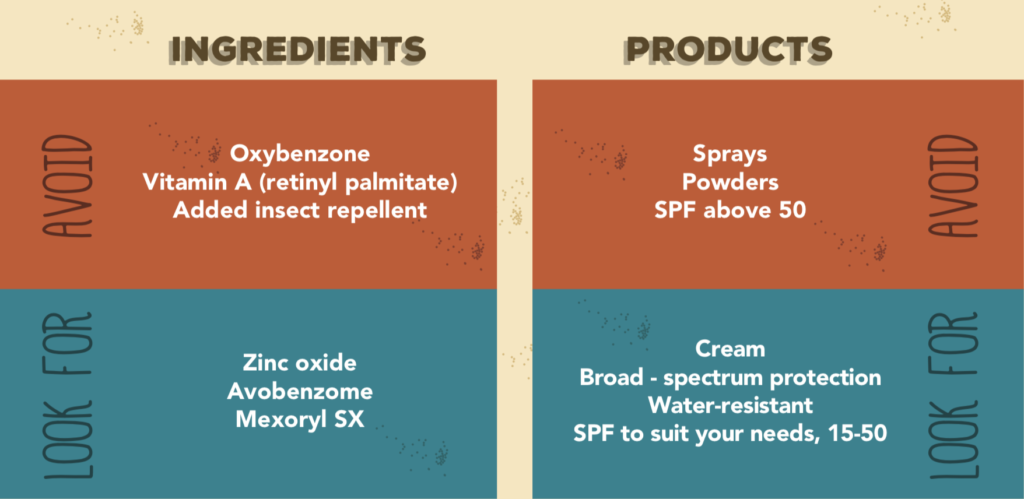
“In a study published in 2014, researchers at Baylor University surveyed the ingredients in 152 children’s body care products labeled “hypoallergenic” and found methylisothiazolinone in 30 of them (Schlichte 2014).”
Although it is still legal in the U.S., this ingredient is not allowed in European products. “In March 2015, the European Scientific Committee on Consumer Safety concluded that no concentration of the chemical could be considered safe in leave-on cosmetic products (EU SCCS 2014).”
Want to read more about ingredients? Click here.
Recommended Sunscreens
Have a sunscreen that you really like? Check here to see if it is safe under EWG standards. Need to find a new sunscreen that is healthy and safe? Check this guide for recommendations. Two brands that we like are All Good and Badger.
